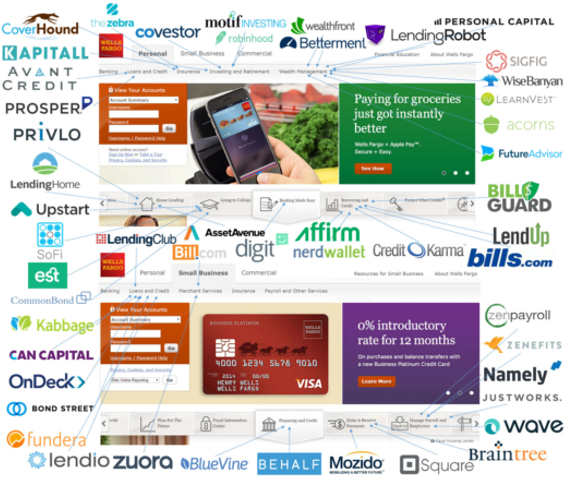The concern borders on fear. “Is what I read and hear at conferences true—disrupt or be disrupted?”
“What does that even mean and how can my decades-old bank change its culture fast enough to start “disrupting”?
“How can my bank, with limited resources become part of the digital age of the customer?”
How can I compete with Amazon, Apple, the big banks, fintech, and digital-only banks?”
“How can we make money and meet the fast-changing demands of our customers?”
“What will my business be like in the next few years?”
These are the questions I hear as I meet with bankers throughout the country.
Sometimes it is expressed explicitly, sometimes it goes unexpressed, but can be seen in the ‘almost’ desperate actions of some banks to create change for the sake of change.
To embark on costly projects without an overall strategy or plan. It does not have to be this way.
At present, banks need to recognize that customer value and transparency go beyond how banks advise their customers.
These primary customer-based metrics also need to be entwined into how banks attract, acquire, and onboard new accounts as well.
Utilizing Salesforce to improve efficiency, make smarter decisions, and personalize the customer experience.
Financial institutions want to serve their customers well, so they seek efficiency improvements. Process automation plays a big part in customer engagement in retail banking.
Manual, disconnected credit and lending processes are being removed and replaced with advanced, automated solutions.
But for optimized customer engagement in retail banking, risk analytics, and decision-making should be tied to other business systems.
Numerous fintech banks and organizations manually extract and duplicate Salesforce data to complete credit checks, risk scoring, and due diligence processes using legacy systems.
This is slow and inefficient. And it can change. Once credit risk retail banking and Salesforce are connected, there can be seamless data exchange.
The latest digital trends in retail banking also indicate that a 360-degree customer view tends to elude most banks given the complexity of integrations and data standards.
However, with the right tools in place, banks can have quick insights into the data they need to be customer-eccentric, transparent, and accountable.
Know this; Customers still love their local bank. They trust them more than any other institution offering financial services.
How could they not when they know that their parents banked there. When they see them physically throughout their community, at softball games and July 4th parades.
Is it possible that the convenience of an all-mobile or all online experience could outweigh the fact that the first serious conversation most people have about money is within the four walls of their local bank?
The key to success for regional and community banks is to combine that unique position of trust with fully integrated, multi-channel digital customer experiences that do not replace, but rather intelligently complement and supplement the traditional bank experience.
Millennial to a bank; “It was awesome when I stopped the other day and you quickly printed me some temporary checks, but why weren’t you there for me when I wanted to do a mobile transfer from my commercial account to my husband’s personal account”?
Here is what regional and community banks can do now;
1) Recognize that you have an innovation advantage.
You can more quickly change their culture and their focus—the first step to creating an innovative bank that adapts and move quickly.
2) Digital transformation
Forget “digital transformation” as a concept. It is essentially meaningless.
Instead, create amazing digital experiences for customers using a building block approach that makes sense for your bank’s market and strategy.
Using cloud-based systems of engagement allows this to be done cost-effectively but rationally and within a coherent technology strategy.
3) Use customer journey mapping and analytics
Use customer journey mapping and analytics to guide the design of these customer experiences.
This does NOT require a team of $300/hr consultants from a consulting firm a thousand times your size.
Play it within the rails, avoid scope creep, and focus on the minimally viable product. If this is new to your culture—see number one.
4) Finding the right partners
Finding the right partners to help through these transitions is a critical part of the equation.
That means companies that fit your culture. Companies that understand your values and importantly your customer’s values.
Don’t be swayed by slick demos and complicated charts and graphs. This is still a people business.
You can and should create a transparent and open relationship of real collaboration with a few key partners that know viscerally that your success is their success.

It is more than possible for regional and community banks to gain market share, create raving fans and succeed in these tumultuous times.
Changing the culture, creating the right strategy, and executing it incrementally with customer journeys in mind is the right first step. Waiting to take it may be costly.
Source: RETAIL BANKING
No comments:
Post a Comment